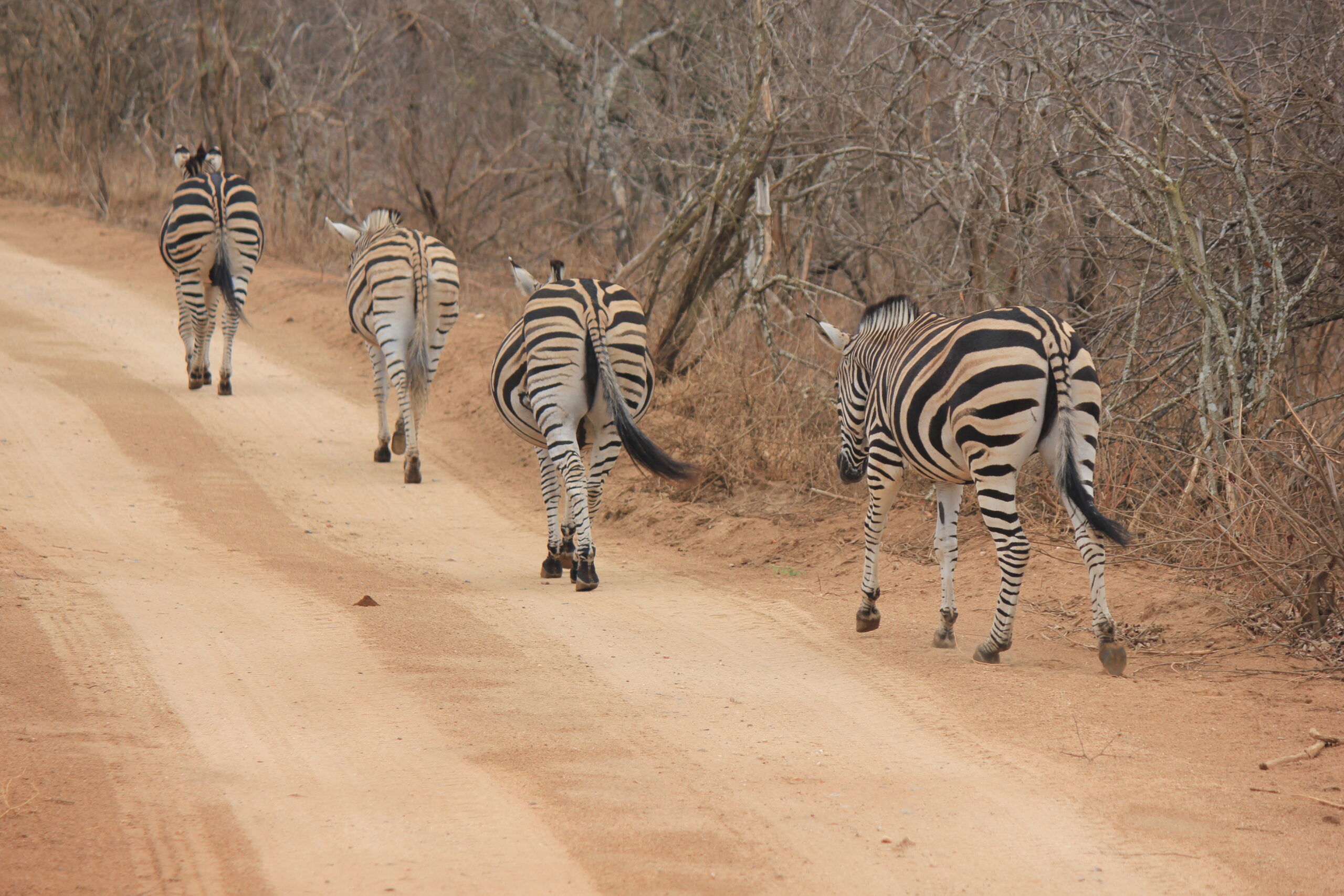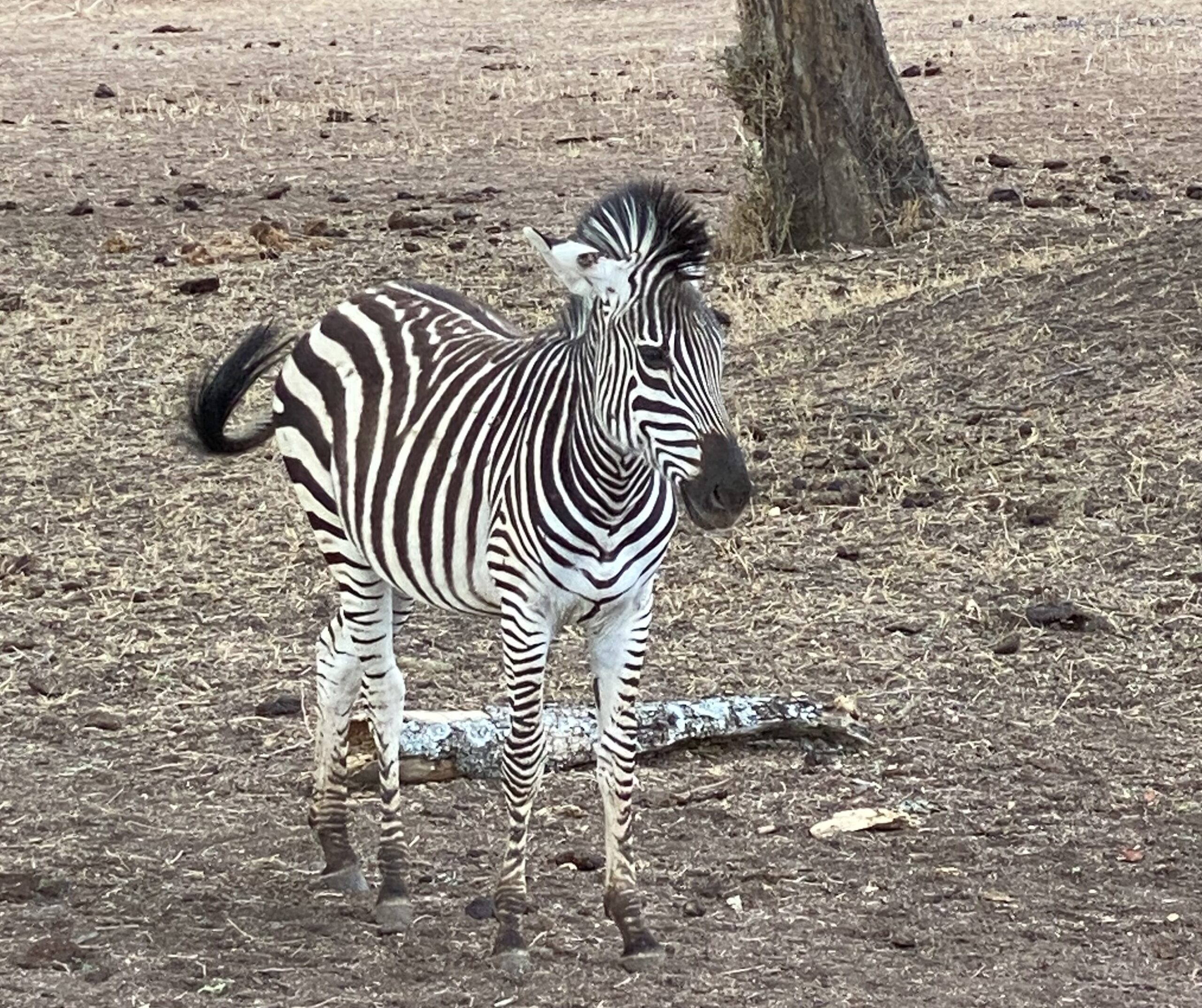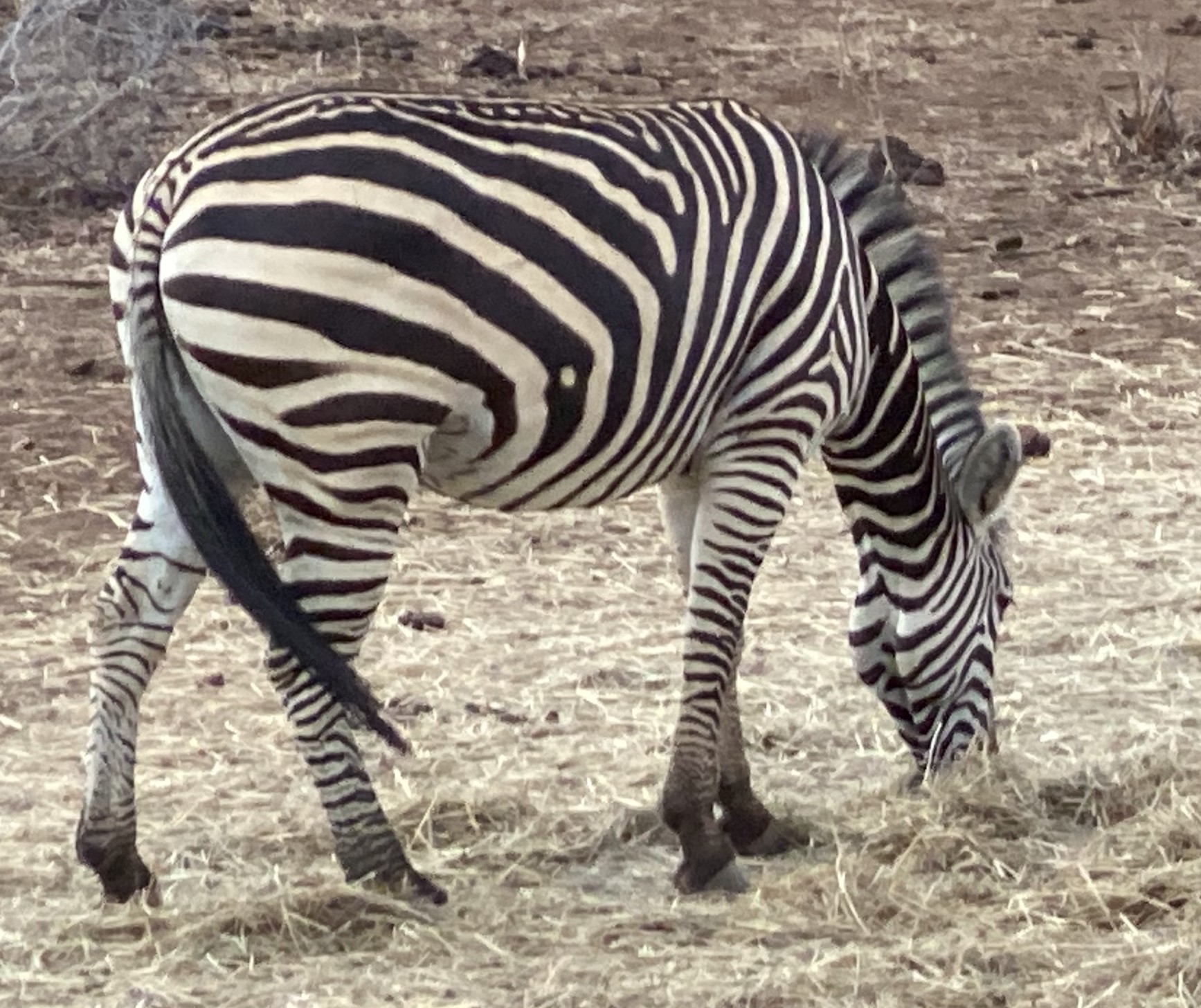Zebras are not only beautiful, they also have fascinating traits and behaviors. Let’s take a closer look at the lives of zebras in South Africa.
The Stripes: Nature’s Masterpiece
Each zebra’s stripes are as unique as human fingerprints, creating an endless variety of patterns.
But these stripes aren’t just for show.
They provide camouflage, especially when zebras huddle together, confusing predators by breaking up their outlines.
Recent research also points to another potential function: thermoregulation, or the regulation of body temperature.
The contrasting black and white patterns might create tiny air currents that help cool the animal’s body.
Additionally, stripes could act as a natural fly repellent, deterring biting insects that typically prefer solid-colored animals.

Look closely at these 4 adult zebra behinds. They all have different stripe patterns.
Meet the Locals: Two Zebra Species
South Africa is home to two distinct zebra species: the plains zebra and the mountain zebra.
Plains zebras roam the grasslands and savannas, while the endangered Cape mountain zebra inhabits rugged terrains and steep slopes.
Conservation efforts for the Cape mountain zebra are crucial, as this species plays a vital role in maintaining the ecological balance of its habitat.
Life in Groups: The Social Zebra
Zebras are social creatures.
They live in family groups led by a dominant stallion, often forming larger herds during migrations.
Strong social bonds within these groups ensure mutual protection.
They alert one another to danger, and work collectively to shield vulnerable members, especially foals.
Their communication is just as fascinating, involving facial expressions and sounds like barks, snorts, and whinnies.
Adapted to Survive: Traits and Defenses
In the wild, survival is an ongoing challenge, and zebras are well-equipped to face it.
Their excellent vision – even in color – helps them spot predators.
Large, rotating ears provide keen hearing, allowing them to detect threats from afar.
When confronted by predators like lions, hyenas, or wild dogs, zebras rely on their agility, reaching speeds of up to 40 mph (65 km/h).
If running isn’t enough, they can deliver powerful kicks or use their strong jaws to bite in self-defense.
Diet and Dependence on Water
As herbivores, zebras primarily graze on grass but can adapt their diet to include shrubs, leaves, and even bark when necessary.
They’re water-dependent animals, needing to drink almost daily, which is why they’re commonly found near water sources.
Their grazing habits not only sustain them, but also play a crucial role in their ecosystems by promoting grass growth and supporting other herbivores.
The Next Generation: Zebra Foals
A zebra’s life begins after a 12- to 13-month gestation period.
Typically, a single foal is born, immediately becoming the focus of its family group.
These young zebras rely heavily on the protection of their herd, as predators often target the weakest members.

Guardians of Grasslands
Zebras aren’t just beautiful.
They’re vital to the health of South Africa’s grasslands.
By grazing, they stimulate new plant growth, which benefits other herbivores.
Their presence ensures a thriving, balanced ecosystem, underscoring their importance beyond their aesthetic appeal.
Let’s settle the color debate once and for all
So, are Zebras black with white stripes, or white with black stripes?

Zebras are black with white stripes.
How do we know?
- Embryonic development: zebra embryos start out entirely black. The white stripes develop later as the embryo grows, suggesting that black is their base color.
- Skin color: under their fur, zebras have black skin. This further supports the idea that black is the fundamental color.
- Stripe formation: the stripes are actually created by a lack of pigment in specific areas. White stripes are essentially areas where pigment-producing cells are inactive, leaving the hair white.
From their mesmerizing stripes to their critical role in the ecosystem, zebras are truly one of South Africa’s marvels.
Protecting these animals and their habitats is not just about saving a species; it’s about preserving the rich biodiversity that makes South Africa a global treasure.
We can’t help your zebra, but if you would like to learn how we can help your cat or your dog with safe surgery and anesthesia, please contact us through www.LRVSS.com
Never miss a blog by subscribing here: www.LRVSS.com/blog
Phil Zeltzman, DVM, DACVS, CVJ, Fear Free Certified
